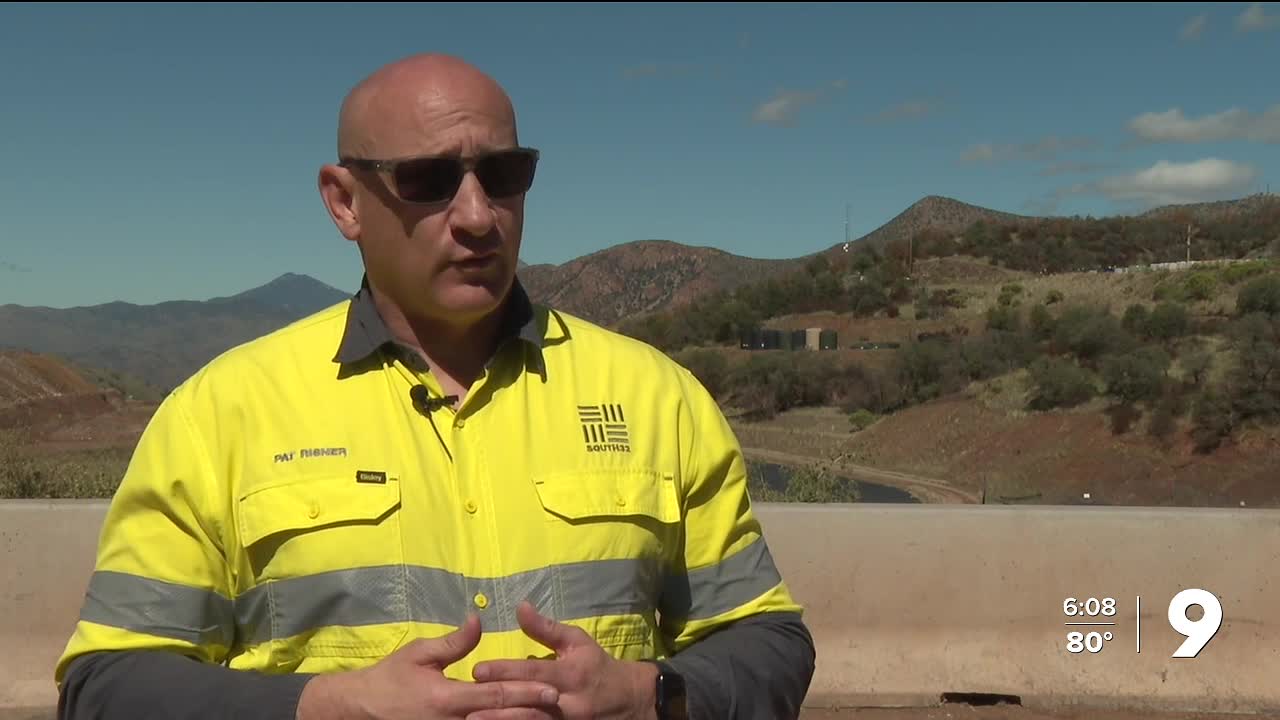PATAGONIA, Ariz. (KGUN) — South32 opened its gates to the public this week, offering a first-hand look at progress on its Hermosa Mine project in the Patagonia Mountains, a site the company says could play a key role in bolstering America’s energy security and supply chain independence.
Construction is about 40 percent complete, with full completion expected by 2027. Once operational, the mine will focus on producing zinc and manganese, two minerals vital for everything from galvanizing steel to powering electric vehicle batteries.
Hermosa Mine President Pat Risner says the project addresses a national need.
“All of the battery-grade manganese at the moment comes from China, and we only mine about five to six percent of the zinc in the world,” Risner said.
According to the U.S. Department of Energy, both minerals are considered critical materials, essential for national defense and the transition to clean energy. To date, there has been no domestic manganese mining in the U.S. since the 1970s, leaving the country dependent on imports.
The federal government is investing in Hermosa’s potential: $166 million from the Department of Energy and $20 million from the Department of Defense have gone toward the project. South32 has committed $2.16 billion of its own funding to move the development forward.
Risner says the mine could help fill a looming supply gap.
“What we’re seeing over the next, less than ten years, is a four-million-ton-per-year gap between global zinc supply and demand developing,” he said. “To close that gap, you’d have to develop three projects the size of Hermosa every year.”
The Hermosa Mine sits within the Sky Islands region, one of the most biodiverse ecosystems in North America. That has prompted concerns among local environmental groups about potential air quality and water use impacts.
South32 says it’s taking steps to minimize those impacts. The mine will disturb only about 750 acres over 70 years of operation, a fraction compared to larger mining projects like Copper World, which could affect more than 7,000 acres.
“We’ve designed an underground mine that will only disturb about 750 acres for up to 70 years of mining,” Risner said. “Typical mines are in the thousands or tens of thousands of acres of disturbance.”
The company also says it plans to reuse up to 90 percent of its water, thanks to a tailings system that returns processed material underground.
“The way we manage tailings allows us to recycle water that would normally be drawn on fresh resources,” Risner explained.
South32 says the project aims to be a long-term community partner. About 80 percent of future jobs are expected to go to residents of Santa Cruz County, with total employment reaching 800 to 900 positions once the mine is fully operational.
In August, the company partnered with the Santa Cruz County Provisional Community College District to launch an electrician training program to prepare local workers for mine-related jobs.
“Where we’re at in the mining industry today, just getting permits isn’t enough,” Risner said. “We have to earn what we call a social license to operate — that’s really about acceptance from the community.”
South32 has also installed air quality monitoring stations in Patagonia, Nogales, and Sonoita to establish baseline readings before operations begin. The company plans to release a public air quality dashboard next week.
Local residents and environmental groups have also set up their own air monitoring, with help from the University of Arizona’s College of Public Health. They claim South32’s monitoring doesn’t capture more fine particulates such as PM2.5.
If construction stays on schedule, zinc production will ramp up in 2027, with full output projected by 2029. Manganese production will depend on the domestic growth of the EV battery market, as infrastructure for refining and processing continues to develop.
The Hermosa project remains the only U.S. mining development currently listed on the federal government’s Critical Minerals Project list, underscoring its strategic importance.
“These are critical mineral supply chains where we have national security risks because of our over-reliance on foreign supply,” Risner said. “This project can change that.”
——
Joel Foster is a multimedia journalist at KGUN 9 who previously worked as an English teacher in both Boston and the Tucson area. Joel has experience working with web, print and video in the tech, finance, nonprofit and the public sectors. In his off-time, you might catch Joel taking part in Tucson's local comedy scene. Share your story ideas with Joel at joel.foster@kgun9.com, or by connecting on Facebook, Instagram or X.






